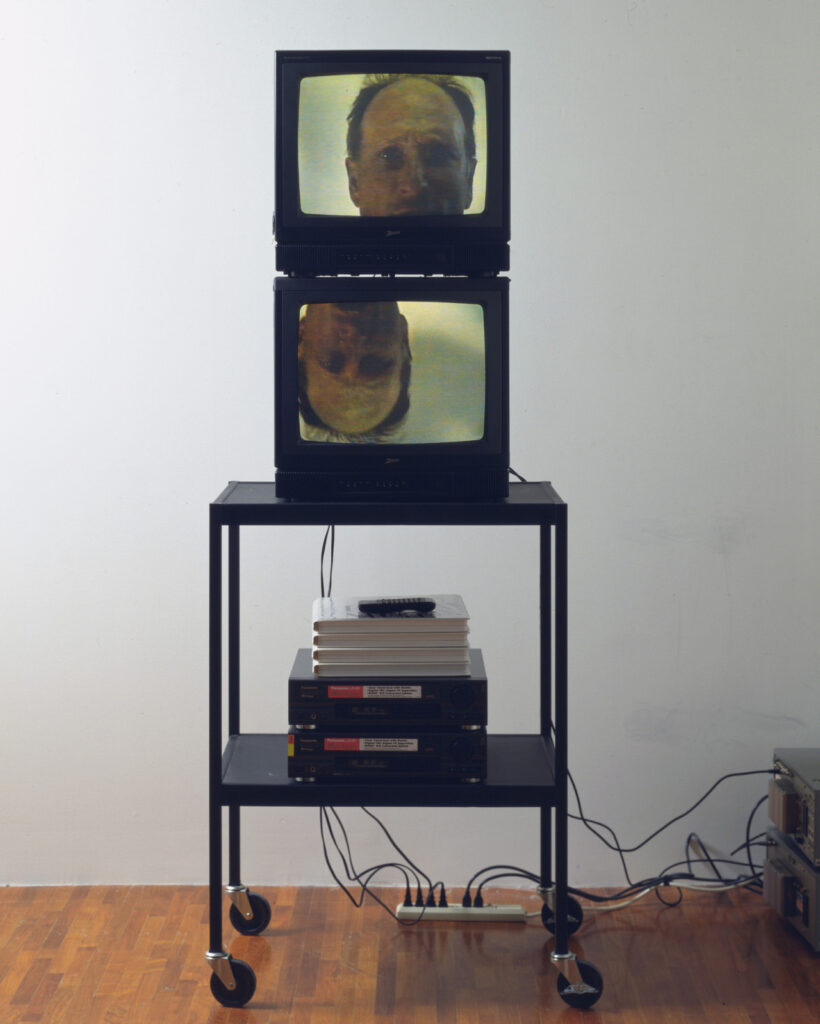
I saw this two-channel Bruce Nauman piece, Think, on the tumblr and marveled briefly at how, when you were soaking in it, the 1990s aesthetic wasn’t an aesthetic; it was just the world around you.
And then I zoomed in to see what exhibition catalogues were stacked on top of the player, and that’s when it hit me: those are no catalogues. They’re the plastic storage cases for laserdiscs. Sitting on top of two new Panasonic LX-101 mini-players, so new they still have the showroom stickers on them.
This photo must have been provided by the dealer, or the artist, even, when Elaine Dannheiser bought this work. And somehow MoMA just kept using this as their reference image when they got the Dannheiser collection in 1996.
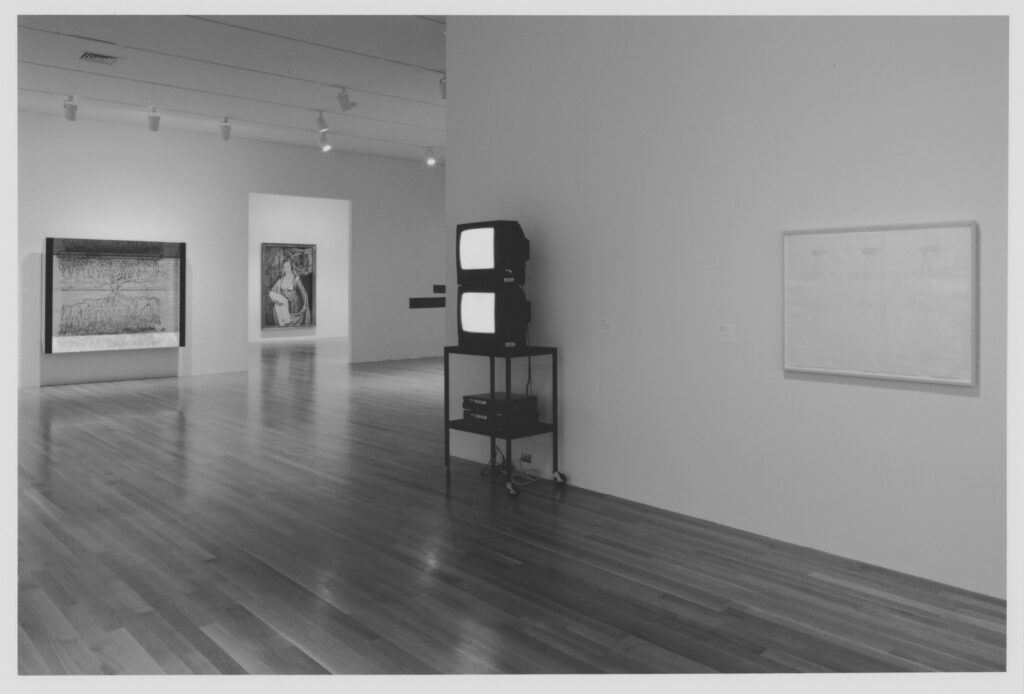
And I realize I’ve seen this piece multiple times. I think it’s a loop of Nauman shouting “Think” over and over. There may be jumping involved, too, which makes the heads move apart from each other.
According to MoMA’s listing, the work consists of “Two color video monitors, two laser disc players, two laser discs (color, sound), and metal table.” So the cases and the remote(s) are not exhibited, or broken out.
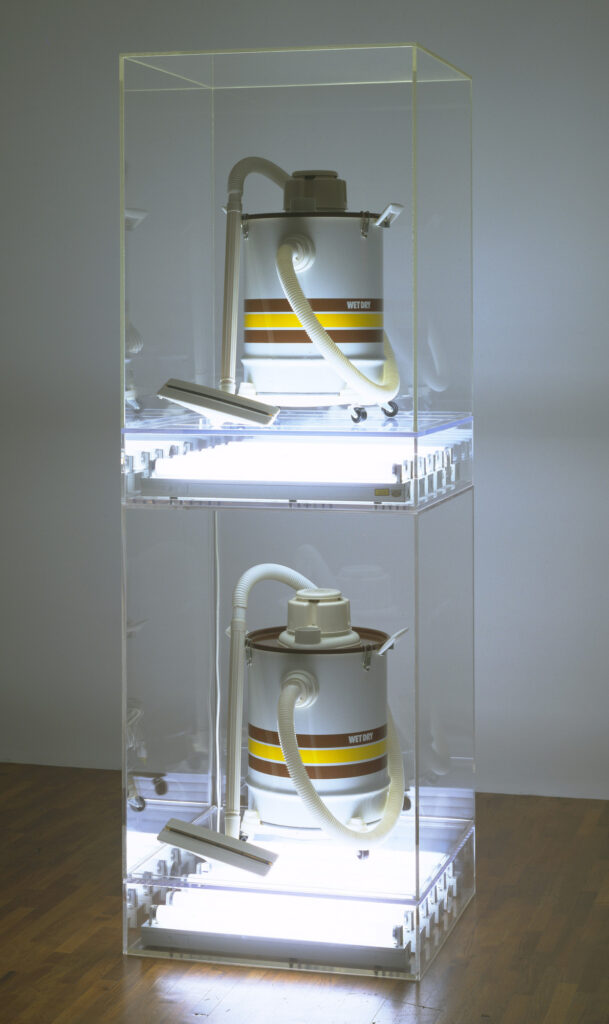
And I realize this video is a sculpture, in the Painting & Sculpture department, and it feels like a darker version of a Koons vacuum cleaner [which the Dannheisers also donated]. And that its hardware, its technology, registers its historic moment even more than its aesthetic. And that this material nature is as precarious, if not as fugitive, as The Last Supper or a Hammons unfired mud cone.
Not that I’m worried—there’s no better place for it than MoMA, who will, when needed, figure it out. That said, it does seem like it has not been exhibited in more than 20 years.
There are many Nauman sculptures in MoMA’s Painting & Sculpture collection, and many Nauman videos in the Media & Performance collection. [A bunch came into the collection in 2008 when Klaus, in build mode, put out a big canonical video art wish list, which were acquired by our committee of young collector/supporters.]
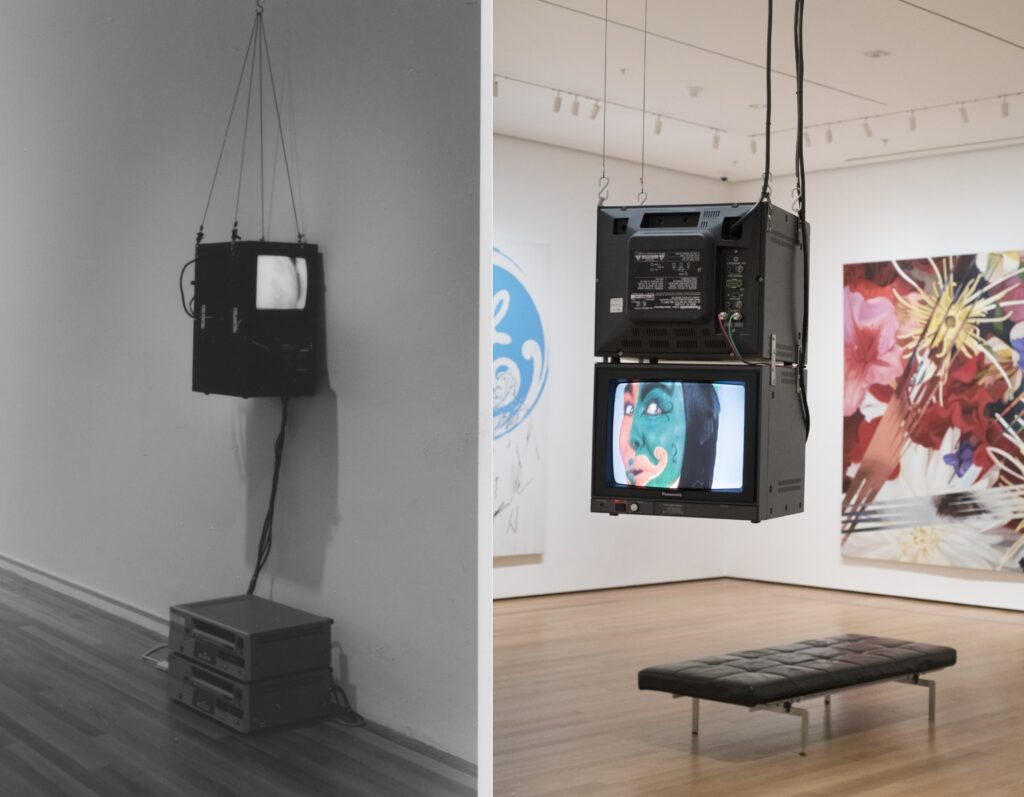
Including Think, there are four Naumans at MoMA which include media, yet which reside in the Painting & Sculpture collection, and three come from the Dannheisers. One, Dirty Story A/B, 1987, is similar to Think in that it’s two monitors, two video tapes, and two players. There is no cart, though, and the video monitors are suspended from the ceiling. When it was first shown at MoMA, the monitors hung above the giant Betamax players, which sat on the floor. When it was shown in 2018, though, the players were out of sight. So their physical presence is less central to the piece than their function—the opposite verdict for whatever playback mechanism replaced them.
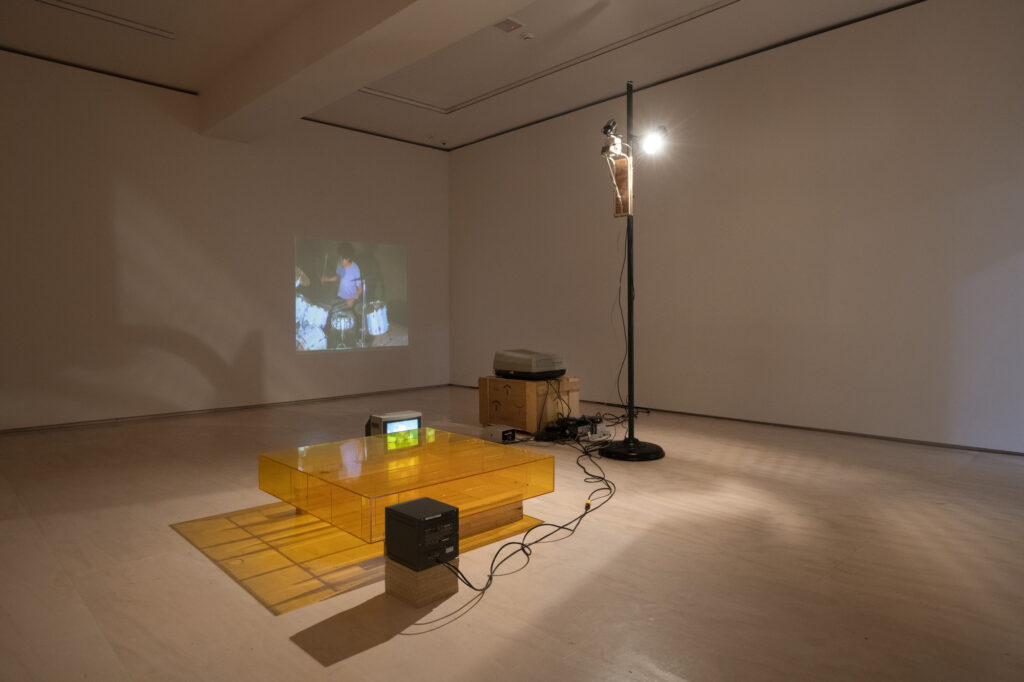
The other Dannheiser work, Learned Helplessness in Rats (Rock and Roll Drummer), 1988, is more complicated. Video monitors, projectors, cameras, speakers and lights are all integral parts of a room-filling installation, with both recorded and live imagery. And that’s exactly how it was shown again in 2018 at PS1.
The P&S department’s acquisition of Days, 2009, in 2009, probably says less about the nature of the work than the nature of the department. The sprawling sound installation, which won Nauman the Golden Lion at Venice, was acquired jointly by MoMA and trustee Maja Oeri’s Hoffman Foundation. It’s on permanent loan to the Kunstmuseum Basel [though it obviously came to visit MoMA in 2010, an PS1 in 2018]. Never mind that this was a unique installation, not an open edition. Or that Nauman’s 2009 prices had surely lapped the entire Media & Performance acquisition budget several times over. Sorting out a joint ownership deal among institutions with overlapping trustees—of a work commissioned for Venice by another major museum— is exactly what the Trustees’ Committee on Painting & Sculpture is for.
